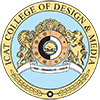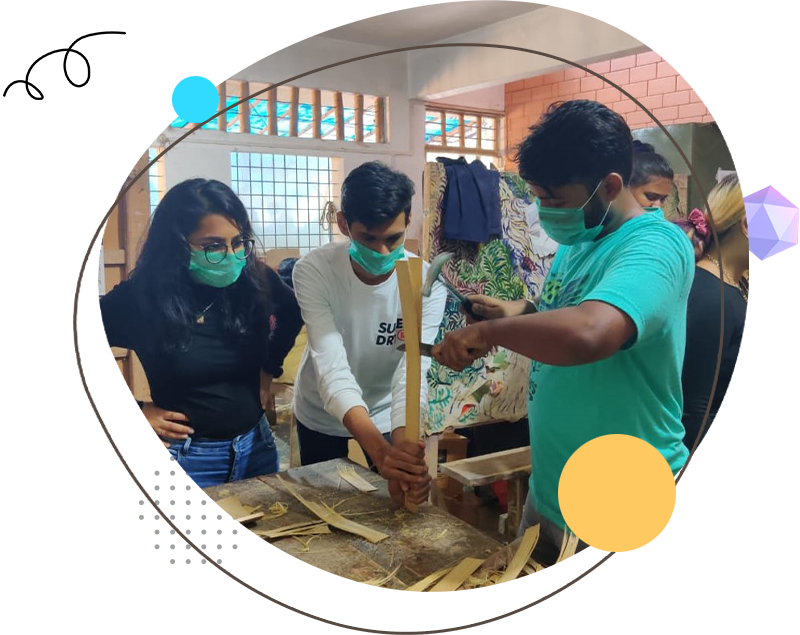
Course Overview
Join the Comprehensive Program on Interior Design
The PG Professional Program in Interior Design at ICAT is a 1-year, full-time program that provides extensive knowledge on sustainable material practices and spatial innovation. This helps you groom as a competitive Interior Design professional addressing the futuristic needs of clients.
The program provides all-round specialist knowledge on interior designing, right from understanding the building material, interpreting floor plans, drawing and design fundamentals, 3-dimensional visualization of space, and construction services to all related software/tools, acoustics, lighting, parametric modelling, and client presentations.

Why Interior Design?
Get, Set for a Rewarding and Challenging Career
By 2030, India is said to rank third in number of constructions with a target of 11 Million buildings around the country. Also, urbanization, lifestyle modifications, the desire for people to own a unique space, and the high revenue producing furniture market are kindling the growth of interior design in India, making it a highly prospective industry.
This highly prospective industry today calls for n-number of skilled interior design professionals, who takes care of the aesthetics and easy function of the different types of space, including residential, office space, malls, theatres, exhibition areas, hospitals and more. The professionals with specialist skills in building a functional space is highly rewarded in this industry. Just build your skills and grab a career of fortune.
Curriculum
The Learning Curve
Program Details
Foundation Course
Ideation and Design Development
SP-I: Building Material
SP-II: Services, Estimation and BOQ
SP-III: Portfolio and Specialization
Major Project
Dear Student,Get Admission / Fees Details
* Required Fields
Skills to Build
Skills to Seek as an Interior Design Professional
-

Construction Materials
-

Sustainable Design
-

Furniture Design
-

Residential Design
-

Office Design
-

Estimation, Specification, and BOQ
-

Retail Design
-

Lighting Design
-

Research & Design
-

Software Skills
Teaching Methodology
Learning beyond the Walls

Research Based Learning
Raising the innovators of tomorrow, the students are guided to proceed through all aspects of research process right from inception to the dissemination of the research, on every key concept in each module..
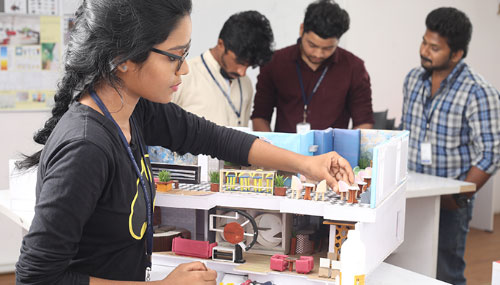
Learn as You Do
Practice-based tasks are a part of every module that gives hands-on understanding of the techniques, mediums, methodologies, and technologies pertaining to creating interior design and related products.
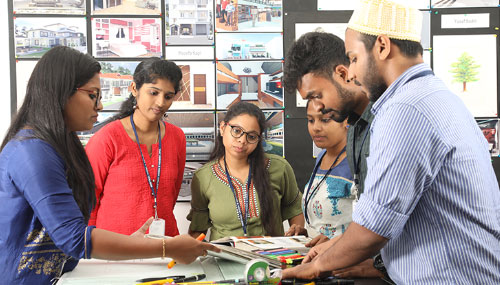
Know from the Professionals
For a perfect insight of the industry requirements, technology used, techniques followed, and more, students are presented with seminars and interactive sessions from eminent professionals in the field. The students are also taken to professional conferences, industry expos etc to gain knowledge on trending works.
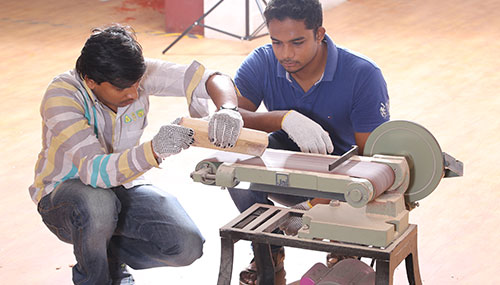
Practice the Professionals’ Way
In order to provide a cutting-edge to the young designers, they are offered with hands-on workshops from professionals on various techniques like brick laying, material application, furniture making, art installations, carpentry, clay modeling, etc.

Get the Art Impulse Outdoor
Students are taken outdoors to various monuments, significant buildings, and popular landmarks, where they get to practice live sketching and understand the spatial qualities of spaces.
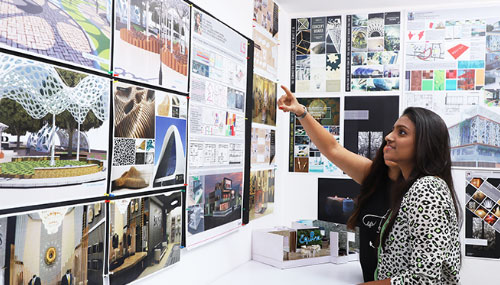
Observe from the Real Sites
Visiting live construction sites to gain knowledge gives the students the utmost exposure towards industrial realities.
Student Awards
Rise and Shine

ICAT Student Won First PrizeGAFX CONFERENCE |
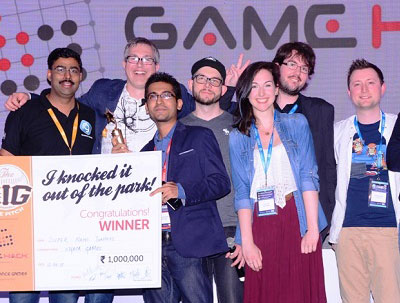
ICAT Alumni Wins a MillionPocket Gamer Connects |
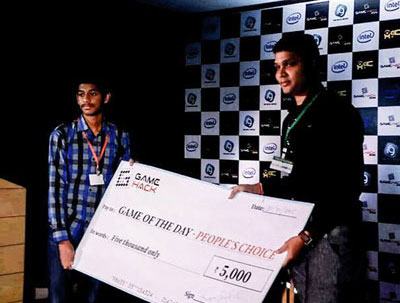
ICAT Student Won 2nd prize - ‘Black Hole’Gamehack |
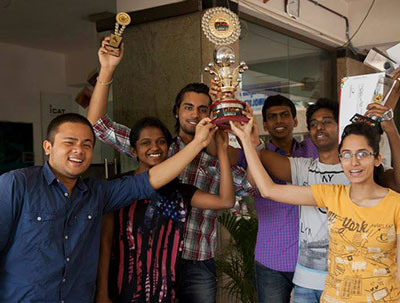
ICAT Students Won Runner-up AwardLa Fete Cultural Fest |
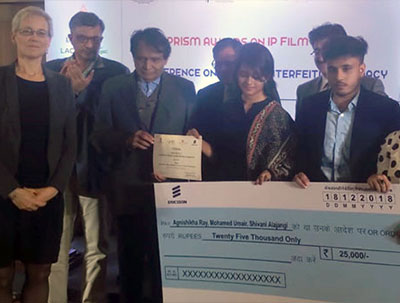
ICAT Student Won Runner-upIPGAF Competition |
Learning Facilities
Practical Learning

Learn by Doing – Right from the Basics
Explore your unique ideas at the industry-standard facilities in ICAT to understand the possibilities in interior designing.

Give the First Shape to Ideas at Design Studio
Interior design studio serves as the place for students to probe into the core principles and skills of their chosen field of study.

Showcase the Design in a Tangible Form
The Model Making Lab at ICAT campus lets students make their miniature models of the space they have it in papers.

Show Your Visualization in 3D
Computer lab with well-configured machines housing industry-standard software and tools opens the digital space for students to give life to their ideas in 3D form.

Experience the Techniques
The exclusive workshop allows students to experience the physical tasks like carpentry, brick laying, etc.

Explore Your Drawing Skills
Access to Art studio helps students experiment their drawing skills that are important to seek a cutting edge as an Interior Designer.

Be Acquainted with the Materials
A specialist Material Library for the students of Interior Design presents them with a number of different materials that are used in the field of Interior Designing.

The Knowledge Repository
Right from history of art and design to techniques with latest technology, the students have access to all interior design information through 100s of books and magazines. This helps them research beyond the classroom lectures and gain immense knowledge on the industry and current trends.

Common to All Departments
In addition to the specific facilities for each department, the campuses of ICAT College are loaded with spacious classrooms, common library with essential readings, locker facilities for students, air-conditioned halls, personal tutoring space, common working zone, students’ lounge, and so on.
Student Testimonial
Our Students Say
Career Opportunities
Get Placed as a...
With an exclusive Placement Cell that holds a record of 100% placement, till date, we assure best jobs for every student who have gathered their skills and are ready to take up challenges of the industry.
As a PG Professional Program Interior Design student, you can get opportunities in architectural, civil engineering and interior design firms, product design firms, theatrical set designing firms, independent design consultancies, furniture / modular furniture factories, and education sectors. You can seek opportunity as a:
 Furniture Designer
Furniture Designer Office Space Planner
Office Space Planner Product Designer
Product Designer
 Retail Designer
Retail Designer Interior Lighting Consultant
Interior Lighting Consultant Set Designer
Set Designer
Why Choose ICAT
Only at ICAT
The focus the program gives towards futuristic technologies and the global knowledge that veterans in our knowledge brigade brings help students stand apart as best in the industry.
Above these, the opportunity to work on Dissertations, create Portfolio, and take up Internship with renowned companies gives the sheer confidence and a cutting edge as an animation professional.
 100% placement
100% placement world-class curriculum
world-class curriculum Degree certified by eminent university
Degree certified by eminent university Highly equipped labs
Highly equipped labs frequent sessions from industry professionals
frequent sessions from industry professionals showcase events give the best learning experience
showcase events give the best learning experience
Top Recruiters
We Collaborate with 500+ Leading companies

Application Process
Become an ICATian
Step 1 : Fill the application form
Apply by Filling Application form.
Step 2 : Interview Process
Go through a direct communication with the Admission Team
Step 3 : Join ICAT
An offer letter will be send. Secure your seat by paying the admission fee.
International Professionals
Learn from the Professionals’ Perspective
| Name | Designation |
|---|---|
| Prof. JAKKIE DEHNN | Internationally-acclaimed expert on Sustainable Materials; Retired University's Reader in Sustainable Product Design, Kingston University, UK |
| Prof. RICHARD SNELL | Furniture Designer and Teacher at Birmingham City University, UK |
| Dr. PANCH SUNTHARALINGAM | Course Director, MA Design Visualisation, Birmingham City University, UK |
| Prof. RICHARD JONES | Senior Lecturer of Interior Design, Birmingham City University, UK |
| Prof. SOLOMON VEDAMUTHU | |
| Ar. BENNY KURIAKOSE | Principal Architect at Benny Kuriakose Architects - Vernacular Art and Architecture |
| Ar. CHETAN K S | Principal Designer & Mentor, Kham Designs - Biomimicry (Sustainability) |
| Ar. DHRUV FUTNANI | Managing Director at Green - Green Building Techniques |
| V. SRINIVASA RAGHAVAN | Glass Sculptor - DakshinChitra |
| MARLENE LITTLE | Birmingham City University, UK |
| JACKIE | Birmingham City University, UK |
| Ar. NAGARAJ S | Principal Architect - Artiature |
| Ar. ANOOP MENON | Principal Architect - AM Studio |
| Mr. SALAMAN | Principal Artist - Fine Art |
| AR. YUVARANI | Junior Architect - Murali Architects |
| AR. SANKEERANI SRINIVASAN | Associate Professor – SEED |
| Ar. THARIKA | Assistant Professor, Mohamed Sathak A.J. Academy of Architecture |
| Ar. SRANYA NS | Principal Architect - Artiature |
| Ar. VIVEK | Assistant Professor, Mohamed Sathak A.J. Academy of Architecture |
| AR. JENITA | Assistant Professor, Mohamed Sathak A.J. Academy of Architecture |
| Ar. MALAVIKA | Assistant Professor, Mohamed Sathak A.J. Academy of Architecture |
Campus Location
Study at Any of Our 3 State-of-the-Art Campuses
-
Chennai
153, Santhome High Road, Mylapore, Chennai - 600 004.
044 - 4293 4293, +91 - 95001 28555

-
Bangalore
424, Bommanahalli, Hosur Main Road, Bangalore - 560 068.
080 - 4110 7755, +91 - 96111 73607

-
Hyderabad
H.NO.3-1-30, S.Y.No:34/2 and 35, Bahadurguda, Saroornagar, L.B.Nagar, R.R.District, Hyderabad - 500 074
040 - 2447 7755, +91 - 75694 34552

FAQ
Still need anything to know?
This is the first item's accordion body. It is shown by default, until the collapse plugin adds the appropriate classes that we use to style each element. These classes control the overall appearance, as well as the showing and hiding via CSS transitions. You can modify any of this with custom CSS or overriding our default variables. It's also worth noting that just about any HTML can go within the .accordion-body, though the transition does limit overflow.
This is the second item's accordion body. It is hidden by default, until the collapse plugin adds the appropriate classes that we use to style each element. These classes control the overall appearance, as well as the showing and hiding via CSS transitions. You can modify any of this with custom CSS or overriding our default variables. It's also worth noting that just about any HTML can go within the .accordion-body, though the transition does limit overflow.
This is the third item's accordion body. It is hidden by default, until the collapse plugin adds the appropriate classes that we use to style each element. These classes control the overall appearance, as well as the showing and hiding via CSS transitions. You can modify any of this with custom CSS or overriding our default variables. It's also worth noting that just about any HTML can go within the .accordion-body, though the transition does limit overflow.
